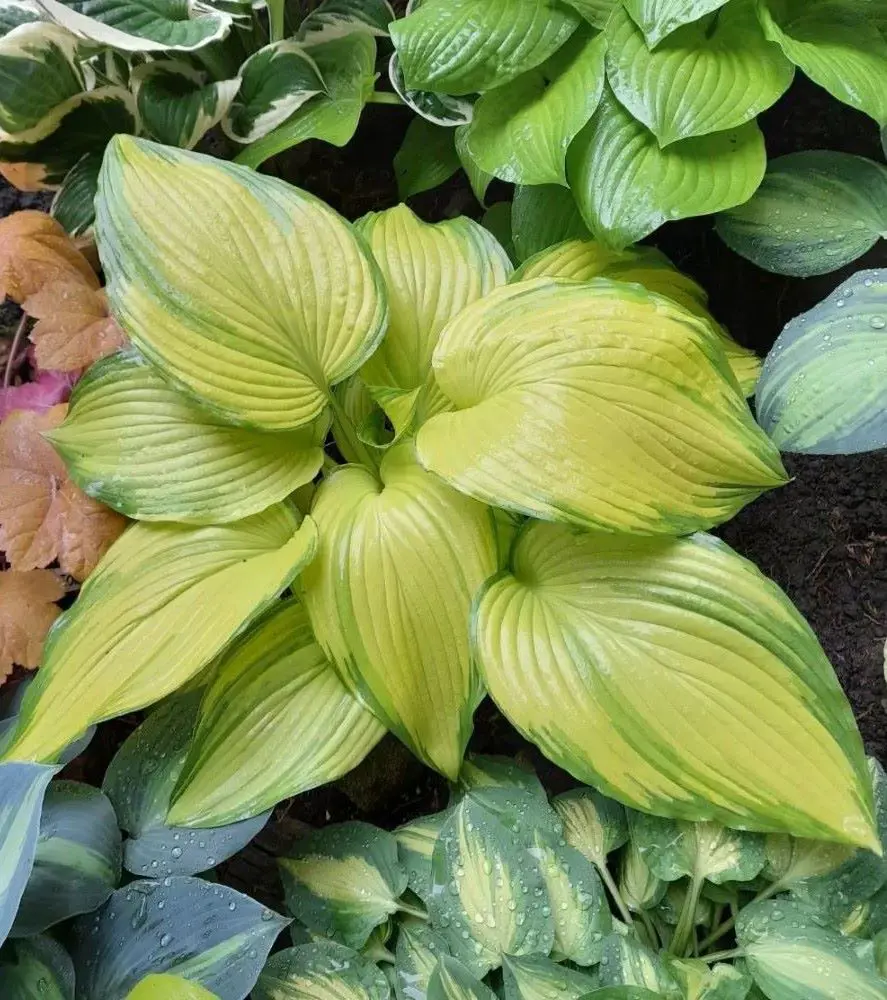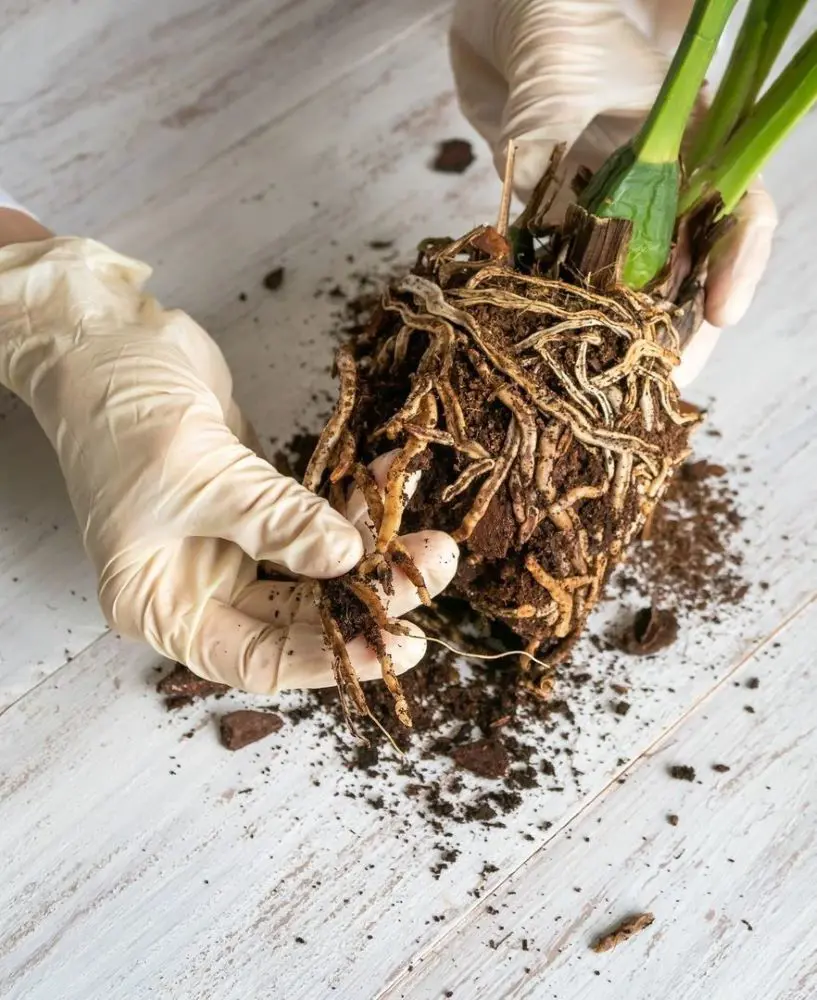A Guide To Grow And Care Weeping Cherry Tree
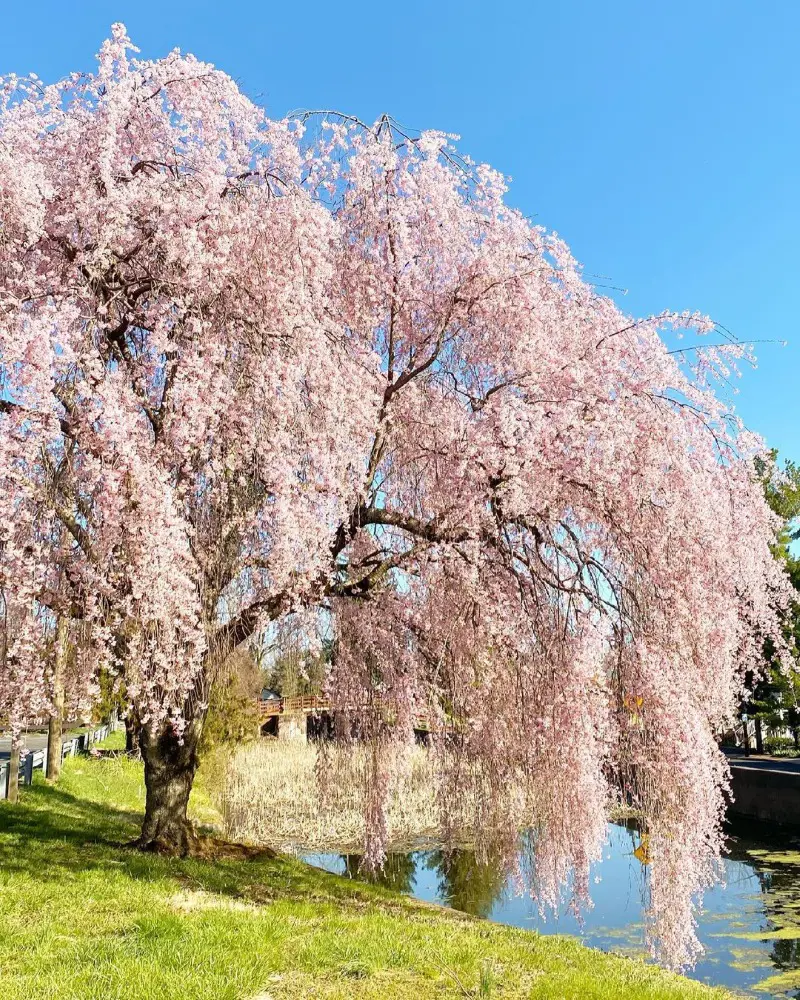
This post may contain affiliate links. If you make a purchase through links on our site, we may earn a commission.
Gardeners often plant the Weeping cherry tree with low-growing perennials or groundcovers like hostas, ferns, and ornamental grasses. Thanks to their aesthetic appeal and with proper care, these trees can fit in any botanical garden.
The weeping cherry trees are commonly used as focal points in gardens to add visual interest. So, if you want a visually appealing garden, this guide explores how you can plant and care for the majestic weeping cherry tree.
Weeping Cherry Tree Overview
| Scientific Name | Prunus pendula 'Pendula Rosea' (formerly, Prunus subhirtella 'Pendula') |
| Common Name | Weeping cherry tree, weeping Higan cherry tree |
| Family | Rosaceae |
| Type | Broadleaf, deciduous tree |
| Size | 15 to 25 ft. tall and wide |
| Sunlight Requirement | Full sun |
| Soil Type/pH | Well-drained, fertile/6.0 to 7.0 |
| USDA Growing Zone | Zones 5-8 |
| Native Area | Species native to Japan |
What Is A Weeping Cherry Tree?
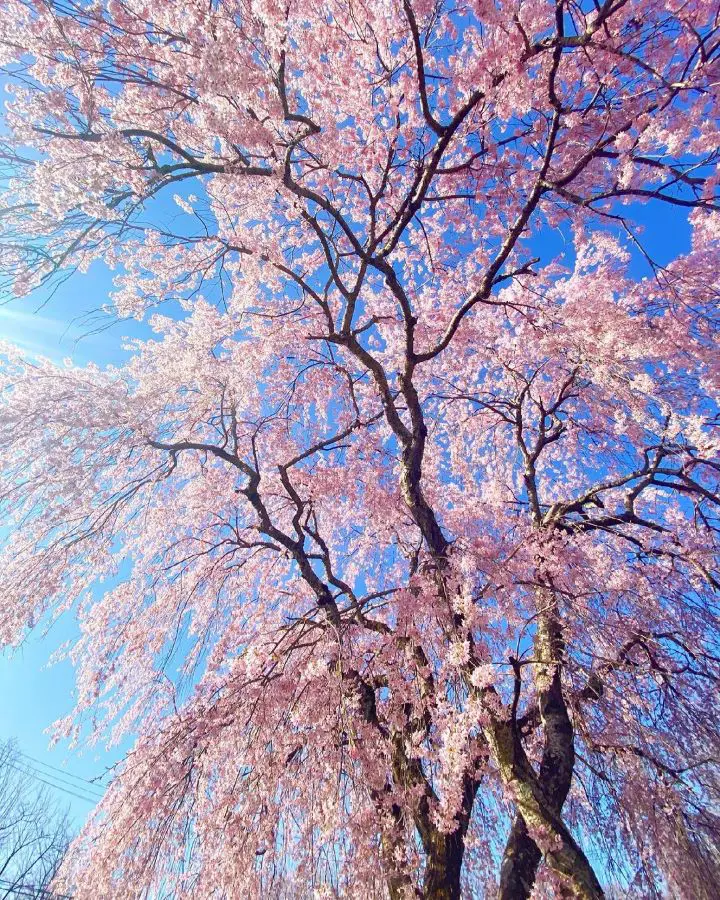
Weeping cherry trees are a type of ornamental cherry tree known for its graceful, cascading branches that give it a distinctive weeping or drooping appearance. These trees belong to the genus Prunus and are cultivated for their attractive blossoms and elegant form.
The trees vary in size depending on the specific cultivar, but they typically range from 15 to 25 feet in height with a similar spread.
While weeping cherry trees can technically be grown indoors in large containers or pots, it can be challenging to replicate the outdoor conditions necessary for the tree to thrive. They are typically grown outdoors in gardens, parks, and landscapes with ground cover plants.
Weeping Cherry Parts
The Weeping Cherry tree is primarily divided into parts like leaves, branches, flowers, scion, bark, and more. The scion is often grafted onto the rootstock of a standard tree.
- Leaves: Also called foliage, the tree's leaves are typically green. However, they turn yellow or bronze in the fall before dropping for winter.
- Flower: The Weeping Cherry produces clusters of pink or white flowers in spring, which typically precede the emergence of foliage and the flowers are typically single or double.
- Branches: The branches of these trees often arch downward, creating a picturesque silhouette.
Weeping Cherry Tree Care
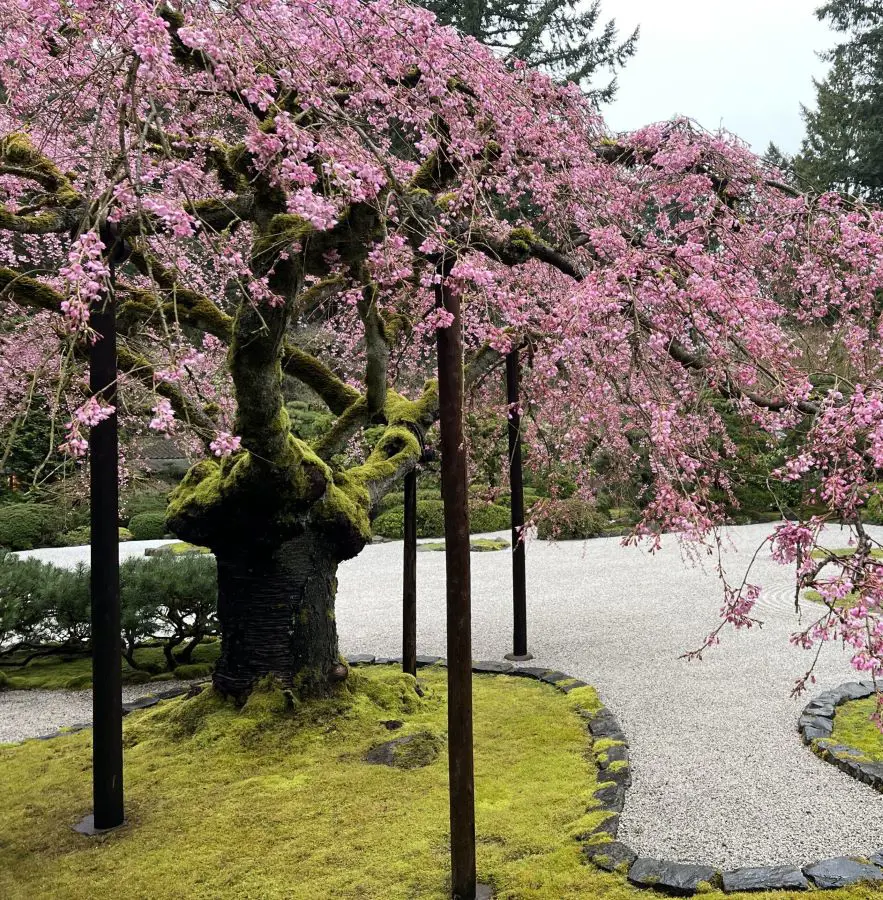
Weeping tree cherries are generally resilient to various environments, thriving in well-drained soil and full sun exposure. With adequate care, including regular watering, pruning, and protection from extreme temperatures or wind, weeping cherry trees can live for several decades, sometimes even a century or more.
If you're considering growing a weeping cherry tree, it's best to plant it outdoors, and here are the conditions it needs for healthy growth and care:
Light
Cherry weeping trees thrive in full sunlight, which is crucial for photosynthesis, the process by which plants produce energy. Ensure the tree is planted in a location where it receives direct sunlight for at least six to eight hours per day, preferably in the morning and early afternoon when the sunlight is most intense.
Avoid planting them in areas with excessive shade or competition from larger trees, as this can hinder their growth and flowering.
Water
While weeping cherry trees are drought-tolerant once established, they still require regular watering, especially during the first few years after planting. Water deeply and thoroughly, ensuring the soil around the root zone is evenly moist but not waterlogged. During hot and dry periods, increase the frequency of watering to prevent stress and dehydration.
Consider installing a drip irrigation system or soaker hose around the base of the tree to provide consistent and efficient watering, particularly during dry spells.
Soil
Weeping flowering cherries prefer well-drained soil with a slightly acidic to neutral pH (around 6.0 to 7.0). Before planting, amend the soil with organic matter such as compost, to improve its texture, fertility, and drainage.
Avoid planting the tree in heavy clay soils that tend to retain water, as this can lead to root rot. Perform a soil test before planting to assess the pH and nutrient levels of the soil.
Temperature
These trees generally prefer temperate climates with moderate temperatures. They thrive in USDA hardiness zones 5 to 8, although specific cultivars may have slightly different tolerances. These trees typically do well in regions where winters are cold enough to fulfill their dormancy requirements without being excessively harsh.
Humidity
They prefer moderate humidity levels, but they can tolerate a range of conditions. However, excessively dry or humid environments can pose challenges for their growth and health.
In dry climates or during periods of drought, supplemental watering may be necessary to maintain adequate soil moisture levels. Moreover, proper spacing between trees to promote air circulation and avoid overhead watering can help reduce humidity around the foliage.
Fertilizer
Apply a balanced, slow-release fertilizer formulated for flowering trees and shrubs in early spring before new growth begins. Follow the manufacturer's instructions regarding application rates and timing to avoid over-fertilizing, which can lead to nutrient imbalances and environmental pollution.
Monitor the tree's growth and health throughout the growing season, and adjust fertilization as needed.
Support
Support may be necessary for young or newly planted weeping cherry trees to prevent damage from strong winds or heavy snow loads, especially during the establishment period.
Use sturdy stakes or posts made of wood or metal, along with soft ties or straps, to secure the tree to the support. Place the stakes or posts on opposite sides of the tree, driving them into the ground firmly but gently to avoid damaging the roots.
Mulching
To conserve soil moisture, regulate soil temperature, and suppress weed growth, apply a layer of organic mulch, such as shredded bark or wood chips, around the base of the tree.
Maintain a mulch layer that is 2-4 inches thick, ensuring it covers the entire root zone but remains a few inches away from the trunk to prevent moisture-related issues and trunk rot. Replenish the mulch annually to maintain its effectiveness and appearance.
Pruning
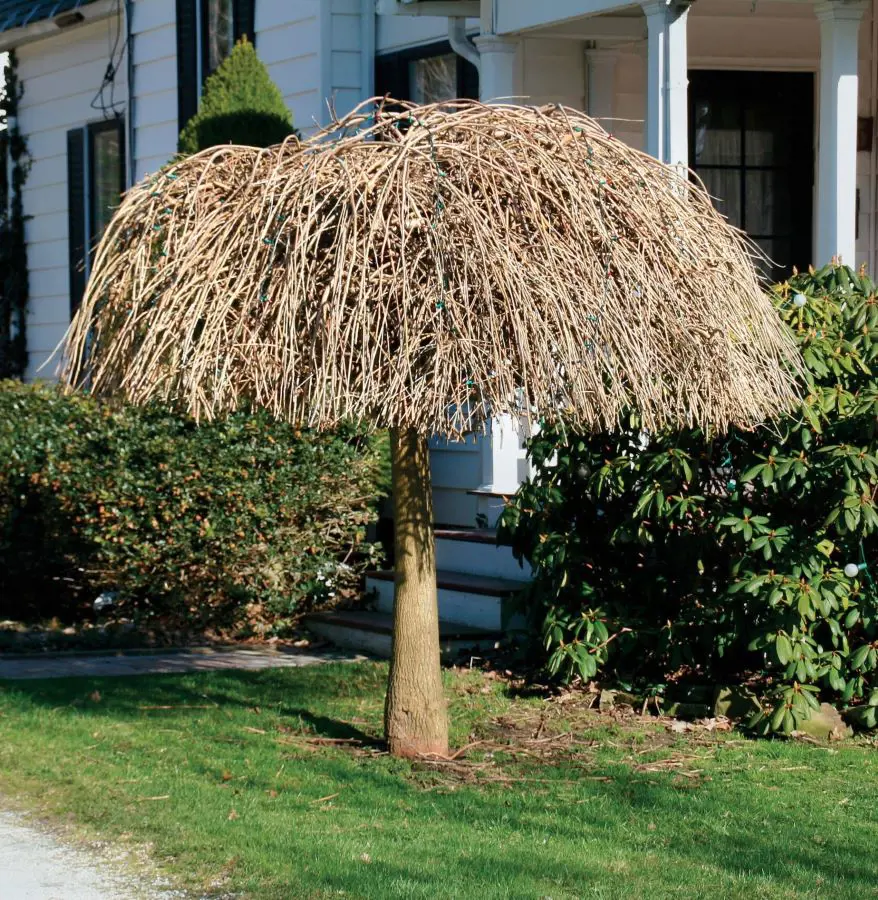
Weeping ornamental cherries require pruning to maintain their shape, remove dead or diseased branches, and promote healthy growth and flowering. The best time to prune weeping cherry trees is during late winter or early spring while the tree is still dormant. Avoid pruning during the fall, late spring, or summer when the tree is actively growing, as this can result in excessive sap loss and stress on the tree.
Additionally, prune suckers and water sprouts to prevent overcrowding and maintain the tree's shape. Remove crossing or rubbing branches to prevent damage and improve air circulation, and trim excessively low branches to enhance visibility and accessibility around the tree.
Tools required
To prune a weeping cherry tree, you'll need a few basic tools:
- Sharp hand pruners for cutting small branches up to 1/2 inch in diameter.
- Loppers for thicker branches up to 1 1/2 inches in diameter.
- Pruning saw for larger branches that cannot be easily cut with pruners or loppers.
- Sterilizing solution (e.g., rubbing alcohol or bleach) to disinfect pruning tools between cuts, especially when dealing with diseased branches.
Pruning Techniques
If you're unsure about how to prune your tree, here are some simple pruning techniques to help you focus on pruning:
- Assess the overall structure and identify branches needing pruning.
- Make clean, angled cuts just outside the branch collar.
- Use a three-cut technique for larger branches to prevent tearing.
- Step back periodically to evaluate progress and maintain the desired shape.
Propagating Weeping Cherry Trees
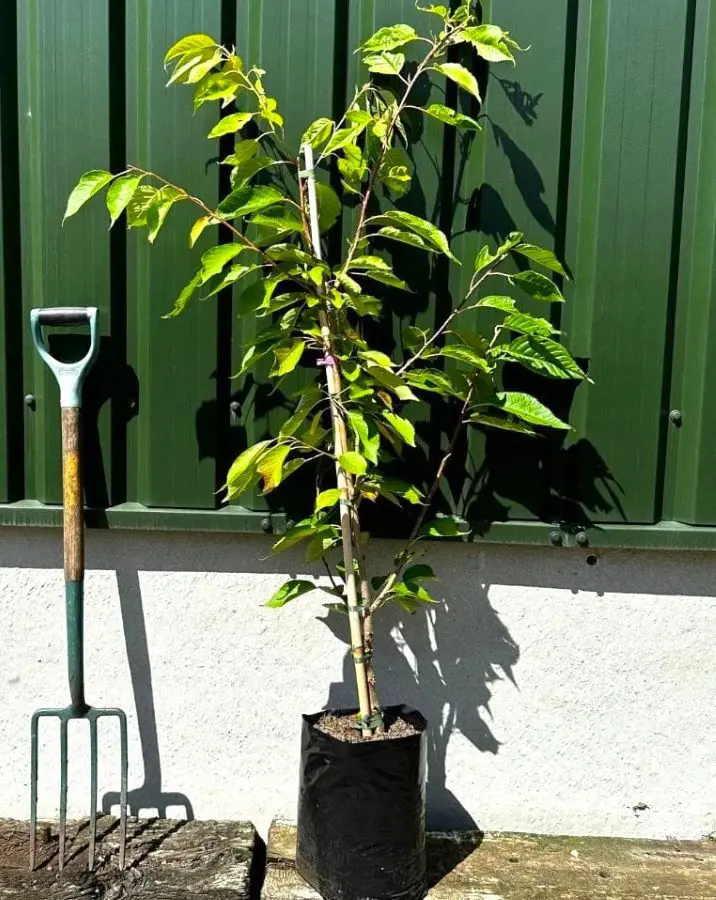
Today, many people plant grafted weeping cherry trees, particularly those with specific characteristics or cultivars desired for their ornamental value. Besides that, they can be propagated through budding and rooting cuttings. However, grafting remains the most popular and reliable way to propagate weeping cherry trees.
Grafting involves joining a piece of the desired cultivar (scion) onto a compatible rootstock of another cherry tree. The best time to take softwood cuttings is typically in early summer when the current year's growth is still soft and flexible.
Here's how to propagate weeping cherry trees through grafting:
- Choose healthy, young shoots from the current season's growth. Cuttings should be 4 to 6 inches long and taken from the tips of the branches.
- Remove any flowers or flower buds from the cuttings. Trim the cutting just below a leaf node and remove the lower leaves to expose a node for rooting.
- Dip the cut end of the cutting into rooting hormone powder to encourage root development.
- Plant the cuttings in a well-draining rooting medium into the medium so that at least two nodes are buried and firm the medium around the cutting.
- Place the cuttings in a warm, humid environment with bright, indirect light.
- Keep the rooting medium consistently moist but not waterlogged.
- Check for root development after several weeks and once roots have formed, the cuttings can be transplanted into individual pots filled with potting soil.
- Gradually acclimate the rooted cuttings to outdoor conditions by exposing them to increasing amounts of sunlight and reducing humidity levels for several weeks.
How to Grow Weeping Cherry Tree From Seed
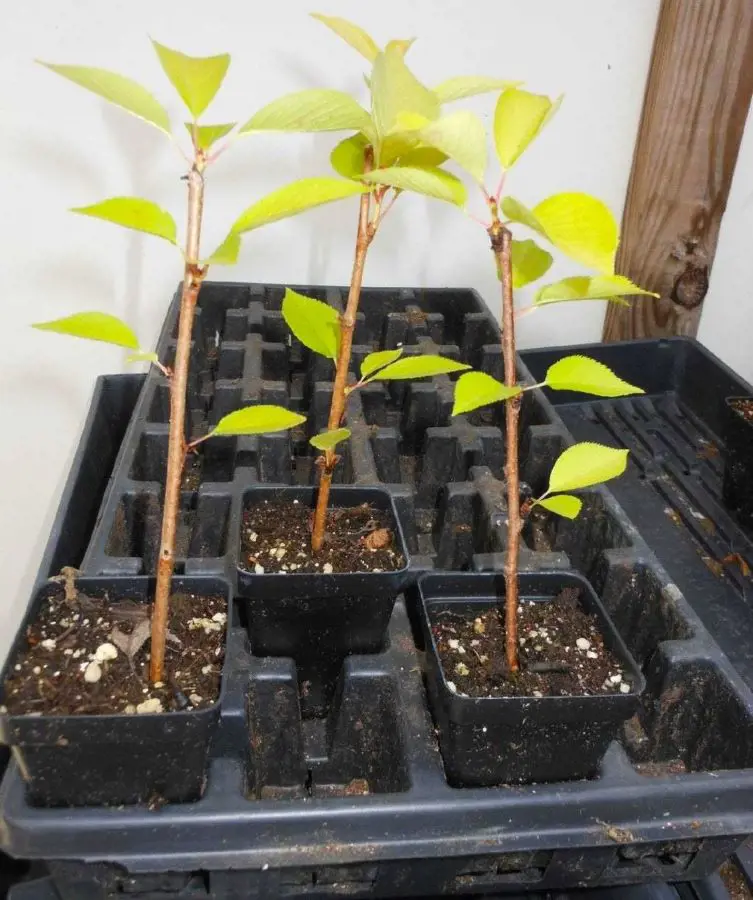
Growing a weeping cherry tree from seed is possible, although it's important to note that the resulting tree may not exhibit the exact characteristics of the parent tree if it was a grafted cultivar. Most commercially available weeping cherry trees are indeed grafted, but they can still produce seeds through cross-pollination with other cherry trees.
Growing Process
- Gather ripe cherry seeds in the fall, remove the pulp, and air dry.
- Refrigerate seeds in a moistened paper towel or peat moss for 60–90 days to break dormancy.
- Sow seeds 1-2 inches deep in well-draining potting soil in containers.
- Place containers in a warm, bright spot with indirect sunlight, and keep the soil consistently moist.
- Water seedlings regularly and transplant them to larger containers as they grow.
- Gradually expose seedlings to outdoor conditions to acclimate them.
- Transplant seedlings to a sunny, well-draining outdoor location after the last frost.
While the resulting tree may not replicate the exact characteristics of the parent, growing from seed can still produce beautiful and unique weeping cherry trees for your landscape.
Winter Care
Weeping cherry trees generally prefer temperate climates and can tolerate cold temperatures within certain limits. They are hardy in USDA hardiness zones 5 to 8 and can thrive in a variety of regions, including parts of the Midwest, Northeast, Mid-Atlantic, and Pacific Northwest. They do well in areas with cold winters and moderate summers, where they can fulfill their dormancy requirements during the winter months.
However, they may require some extra care during harsh winters, especially in colder zones. Apply a layer of organic mulch around the base of the tree before winter to insulate the roots and protect them from freezing temperatures.
In regions with late spring frosts, consider covering the tree with a breathable fabric or frost cloth to protect the blossoms from frost damage. If heavy snow accumulates on the branches of the tree, gently brush them off to prevent branches from bending or breaking under the weight of the snow.
How to Get Weeping Cherry Trees to Bloom
While proper pruning and basic care are crucial for a healthy weeping cherry tree, there are some extra tips you can try to boost its blooming potential. Generally, they bloom in mid-to-late spring, typically between March and May in the northern hemisphere.
The individual blooms on a weeping cherry tree typically last for 7–10 days, and the overall blooming period for the entire tree can range from 1-3 weeks. To encourage weeping cherry trees to bloom:
- Minimize digging around the tree's roots, which can damage vital feeder roots and impact blooming.
- If you suspect nutrient deficiencies, a soil test can help identify and address any imbalances that might hinder blooming.
- Young trees might take several years to mature and start blooming regularly. Consistent, proper care, and patience are keys.
Weeping Cherry Tree Types
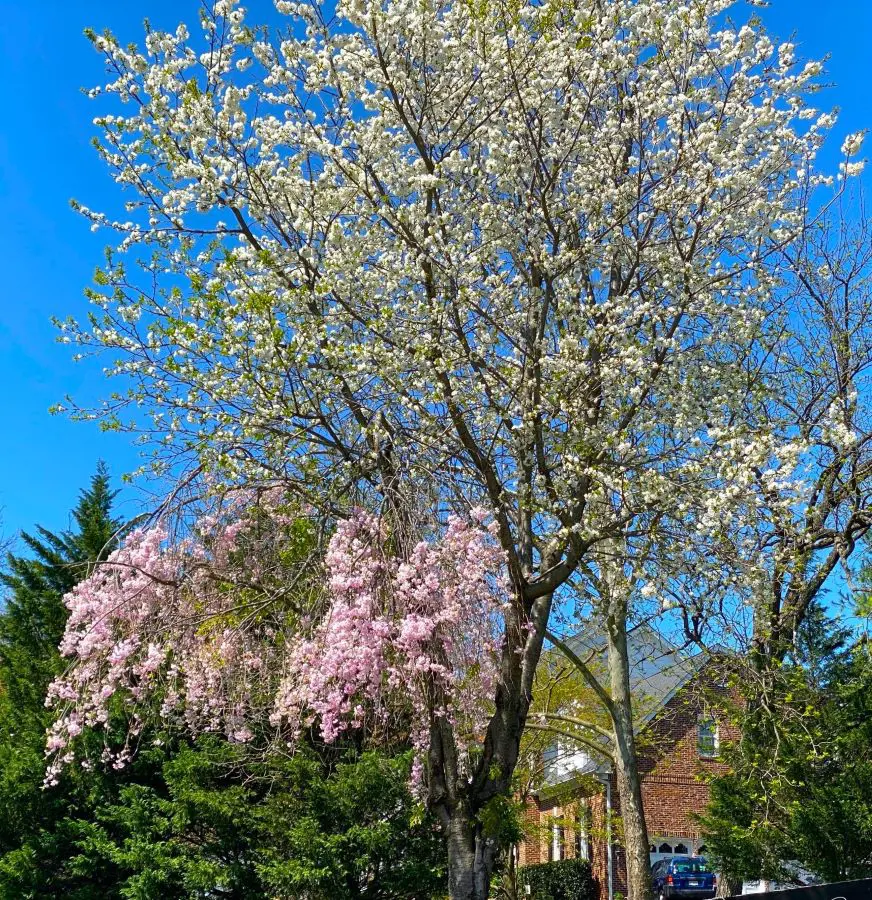
Weeping cherry trees encompass various cultivars and species, each with its unique characteristics. These trees can generally be categorized into grafted and non-grafted types:
Grafted Weeping Cherry Trees
Many of the weeping cherry trees available in nurseries and garden centers are grafted cultivars. These trees are created by grafting a weeping cherry scion (a desired cultivar) onto the rootstock of another cherry tree. Grafted trees tend to exhibit consistent traits, such as flower color, growth habit, and disease resistance. Some popular grafted cultivars include:
- Prunus 'Snow Fountain'
- Prunus 'Pendula Rosea'
- Prunus 'Snow Showers'
Non-Grafted Weeping Cherry Trees
Non-grafted weeping cherry trees are grown from seeds or cuttings and do not involve grafting onto a different rootstock. These trees may exhibit greater variability in traits compared to grafted cultivars, as they are not genetically identical to a specific parent tree. However, they can still produce beautiful blossoms and maintain the graceful weeping form characteristic of weeping cherry trees. Some popular cultivars include:
- Prunus subhirtella 'Pendula' aka Higan cherry or Yoshino cherry
- Prunus 'Snofozam' (Pink Snow Showers)
Challenges With Weeping Cherry Tree
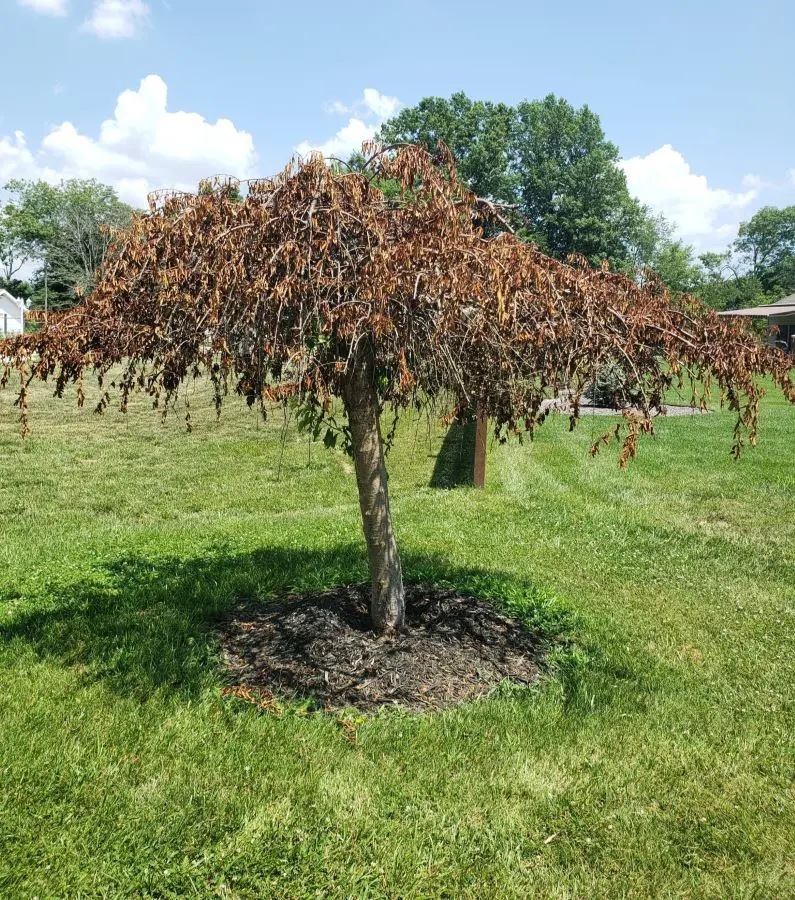
Weeping cherry plants are susceptible to various problems, including pests, diseases, and environmental stressors. The most common problems with weeping cherry trees include:
Pest Infestations
Pests such as aphids and scale insects may feed on the leaves, branches, or sap of weeping cherry trees, causing damage and weakening the tree.
Solution:
- Use insecticidal soap, neem oil, or horticultural oil to treat pest infestations.
Fungal Diseases
Fungal diseases like powdery mildew and leaf spot can affect weeping cherry trees, causing symptoms such as white, powdery growth on leaves or dark spots.
Solution
- Prune affected branches to improve air circulation and remove infected leaves.
Root Rot
Overwatering or poorly drained soil can lead to root rot in weeping cherry trees, causing roots to rot and impair the tree's ability to absorb water and nutrients.
Solution
- Improve soil drainage by amending heavy soils with organic matter and ensuring proper watering practices.
- Avoid overwatering and allow the soil to dry out between waterings to prevent root rot.
Graft Failure
In grafted weeping cherry trees, graft failure can occur if the union between the scion (weeping cherry cultivar) and rootstock is weak or damaged, leading to the decline or death of the tree.
Solution
- Proper care and maintenance can help minimize the risk of graft failure.
- Avoid damaging the graft union during pruning or other activities, and provide adequate support for the tree to prevent stress on the graft.
Recent posts
Plant Care
Plant Care
How To Plant, Grow and Care Majesty Palm
The majestic palm, scientifically known as Ravenea rivularis, makes for a stunning indoor tree with its lush and grand fronds. Originating from Madagascar's river banks, this resilient houseplant is cherished not only for its beauty but also for its ...
Plant Care
How To Grow And Care For A Hosta Plant
Hosta plants are widespread perennials, often grown for their beautiful and diverse foliage. They are extremely easy to care for and can thrive in various conditions, particularly shade or semi-shade. These hardy plants can last for many years and re...

